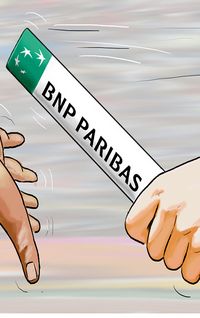The right way
Coming back to the market after several years away was always going to be tricky – even for one of the world’s largest integrated electricity and gas operators.
But a concerted marketing approach that spanned more than four years – and re-established a regular funding base in the liquid US markets – ended up paying rich dividends for Italian utility Enel.
Enel’s US$5bn three-part trade in May, the company’s first US dollar foray since 2013, was not big by the standards of the US market. But it was a clear standout for its execution and pricing.
“Preparation was key for the success of the transaction,” said Alessandro Canta, head of finance at Enel. “We have been absent from the US market for the last few years, but we updated US investors on a regular basis – an investment that paid off.”
The trade was the largest US dollar deal ever from an Italian corporate – and it took some effort to get it done.
“It was not easy to find a pricing comparable for an operation like ours,” said Canta. “Part of the challenge was to educate investors so that they were fully aware of the fundamental strengths of our business.”
The deal comprised five-year, 10-year and 30-year tranches. Books quickly built up to US$16.6bn, allowing Enel to tighten spreads substantially on all three tranches.
“We wanted to establish a strong benchmark in the US market, so focus was on issuing a sizeable and liquid tranche [in order to] give a strong signal to the US market that we are committed to be a regular issuer,” said Canta.
Final pricing had a few basis points of new issue concession – roughly 4bp–6bp, according to IFR calculations.
Still, those levels were some 20bp inside where Enel theoretically could have done a deal in euros. The trade also helped to lengthen the average maturity profile of the group to seven years from one.
The issuer was keen to ensure maximum distribution with high-quality accounts, so the composition of the book was tilted towards asset managers, institutions, pension funds, banks and private banks, and less towards hedge funds.
The trade’s success encouraged Enel to issue a separate US$3bn three-parter – April 2022s, April 2027s and May 2047s – in October. That deal was also a runaway success, meeting all the objectives it set out to achieve in 2017. Total savings from issuing in US dollars versus euros across both transactions was a neat €197m. Enel hopes to do more US dollar deals in 2018 as it looks to meet redemptions.
Joint bookrunners were Barclays, BNP Paribas, Bank of America Merrill Lynch, Citigroup, Credit Suisse, Goldman Sachs, HSBC, JP Morgan, Morgan Stanley and Societe Generale.
To see the digital version of this review, please click here.
To purchase printed copies or a PDF of this review, please email gloria.balbastro@tr.com.


